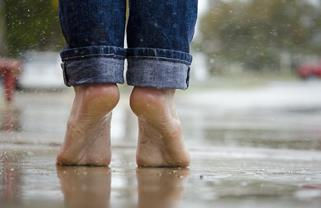Collagen for Ageing Skin
- Chin Ling
- Oct 27, 2019
- 3 min read
Updated: Nov 29, 2022
I’ve been taking collagen long enough now to justify doing an honest review. I started 16 months ago and I was sceptical. It makes sense that what you take on the inside will help with what’s on the outside and I had read years back about the benefits of taking collagen and how it would affect the body.

When we think about collagen, in the beauty world we tend to think first of collagen in the skin. However, collagen is everywhere in our bodies. In the tissue under the skin, in the muscle, in the tendons which attach the muscle to the bone, the ligaments which connect bone to bone and then, it’s in the connective tissue that holds the body together. In the skin itself, collagen is the structure that helps hold up our elastin fibres, it gives us the bounce and spring back when you touch your skin. Loss of collagen results in loss of elasticity, more lines and wrinkles, thinner skin and dryness.
It is estimated that from your late 20s you gradually lose about 1% of collagen in your skin so that by the time you’re 40 you’ve already lost at least 10%. For women that gets worse as they reach menopause where they can lose up to 30% of collagen in the skin over the first 5 years.
Back to my scepticism. Last year I got into the habit of taking 10,000mg of collagen every day but it wasn’t until 6 months later when I got out of the daily habit and stayed so for over 2 months that I noticed my knees had started hurting. My knees have plagued me for over 16 and I had used a plethora of products to help me but during the 6 months of daily dosing of collagen I had not realised that the pain had gone. Until it came back. Fortunately, back on the daily dose and a couple of weeks later I was good to go.
Did it show in my skin?
I always remind people when they take supplements that the skin is the last organ to take from what you ingest and with collagen, that is definitely the case. If your body needs it your body will take it. Well, I was pleasantly surprised when the side effect was softer and bouncier cheeks.
However, not all collagen supplements are created equal. The reason for my scepticism in the first place was I had taken 2 other brands previously with no results. The quality of collagen depends on its molecular weight and the quality of the manufacturing. Nearly all brands now use hydrolysed collagen which means that collagen particles are made into smaller molecules to be better utilised. Pig and cow collagen (porcine and bovine) molecules are known to be larger than marine so are less bioavailable to the body.
More ethical source
The collagen is extracted from fish scales so essentially it's a waste product. However, because I prefer my meat and fish to come only from wild or free range sources my preferred supplier is LoveLiveSupplements. I used to use a glossy brand that was also effective for me but they used farmed fish so that didn't sit well with me. Plus they were double the price.

How do you take collagen?
Collagen comes in 3 forms. The 2 most popular, the powder and liquid forms are well absorbed and utilised in the body. The collagen powder that I sell contains just over 10,000mg-15,000mg of collagen which lasts slightly more than a month. The collagen comes from pasture raised cattle in Argentina where they spend a large portion of their lives roaming and feeding on pasture. I realise this is not great for vegetarians so the alternative is wild marine collagen which has doubled in price recently.
Some brands offer capsules which are a convenient though less bioavailable form. You would probably need to take anything from 4 to 8 capsules to get the equivalent amount that's in a powder. There's only so much you can squeeze into a capsule.




Comments